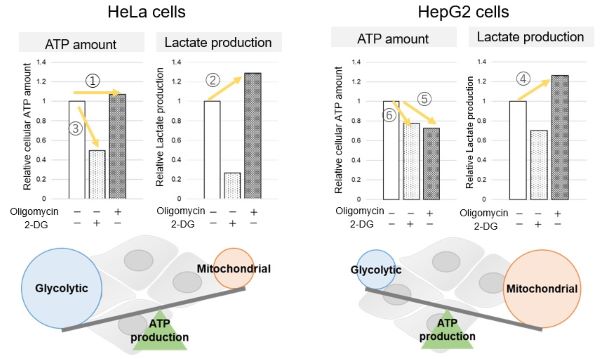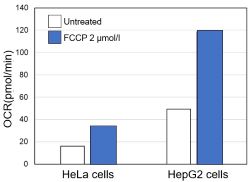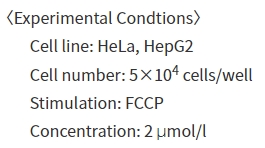|
Recent research on neurodegenerative diseases is revealing that although neurons require glycolysis, excessive neuronal glycolysis causes cognitive decline. Here are some of the papers showing glycolytic activity in neurons and neurodegenerative diseases.
Neurons require considerable energy to function, and while they rely primarily on glucose, they have a relatively low rate of glycolysis compared to other cells. This limited glycolytic activity is essential for maintaining mitochondrial health and preventing redox stress. Neurons use glucose-derived metabolites from glycolysis to fuel the tricarboxylic acid (TCA) cycle for ATP production. Disruptions in glycolysis can impair cognitive function and lead to neurodegenerative diseases, highlighting the balance that neurons maintain between glycolysis and mitochondrial energy production.
|
-
Weak neuronal glycolysis sustains cognition and organismal fitness
Click here for the original article: Daniel Jimenez-Blasco, et. al., Nature Metabolism, 2024.
Point of Interest
- Neurons rely on limited glycolysis to prevent mitochondrial dysfunction and maintain cognitive function and metabolism.
- Increasing glycolysis in neurons causes mitochondrial abnormalities, redox stress, bioenergetic deficiencies and cognitive decline in mice.
- Restoring brain NAD+ or reducing mitochondrial stress reverses cognitive decline caused by excessive neuronal glycolysis.
-
Restoring hippocampal glucose metabolism rescues cognition across Alzheimer’s disease pathologies
Click here for the original article: Paras S. Minhas, et. al., Science, 2024.
Point of Interest
- Inhibition of indoleamine 2,3-dioxygenase 1 (IDO1), an enzyme expressed in astrocytes, restores astrocytic metabolic support and rescues synaptic plasticity and memory in preclinical models of Alzheimer's disease.
- Blocking IDO1 improves glucose metabolism and lactate production in the hippocampus and improves neuronal function in AD mice.
- IDO1 inhibition, originally developed for cancer, may treat neurodegenerative diseases such as Alzheimer's and Parkinson's by restoring brain metabolism.
-
Neurons require glucose uptake and glycolysis in vivo
Click here for the original article: Huihui Li, et. al., Cell Reports, 2023.
Point of Interest
- Neurons perform glycolysis and rely on it to supply TCA cycle metabolites for energy production.
- Deletion of GLUT3 or PKM1 in neurons results in age-related learning deficits, altered glucose metabolism, and changes in brain volume.
- Neurons require glycolysis for normal function, with compensatory mitochondrial changes occurring when glycolysis is disrupted.
|
| Related Techniques |
|
|
|
|
|
|
|
|
|
|
|
|
|
|
|
|
|
|
|
|
| Related Applications |
Comparison of metabolic pathway in two types of cancer cells
The dependence of OXPHOS and Glycolysis in two types of cancer cells, HeLa and HepG2, were compared based on Lactate production, ATP levels, and OCR values.
Many cancer cells produce ATP through the glycolytic pathway. On the other hand, it has been recently reported that cancer cells whose glycolytic pathway is suppressed survive by shifting their energy metabolism to OXPHOS by enhancing mitochondrial function, and the dependency of metabolic pathways differs depending on cell lines.
|
<Evaluation by Lactate production and ATP levels>
-

We confirmed the changes in ATP and Lactate production when ATP synthesis by OXPHOS was inhibited by Oligomycin stimulation and by 2-Deoxy-D-glucose (2-DG) in the glycolytic pathway. The results showed that HeLa cells depend on Glycolysis and HepG2 cells depend on OXPHOS to synthesize ATP.
-
When OXPHOS was inhibited in HeLa cells, ATP levels remained unchanged (①), and lactate production increased (②). This suggests that even when OXPHOS is inhibited, glycolysis can be further activated. Conversely, when glycolysis is inhibited, ATP levels decrease significantly (③), indicating that energy production depends on glycolysis. On the other hand, when OXPHOS was inhibited in HepG2 cells, lactate production increased (④), indicating that the cells attempt to compensate for energy production by enhancing glycolysis, but ATP levels still decrease (⑤). This means that even with increased glycolysis, ATP production is not sufficiently compensated. Furthermore, ATP levels decrease more when glycolysis is inhibited (⑥), suggesting that energy production in HepG2 cells depends more on OXPHOS than glycolysis.
Products in Use
- Glycolysis/OXPHOS Assay Kit
-
<Evaluation by OCR value>
 
-
Using the same number of cells, we measured the OCR value when cellular oxygen consumption was promoted by stimulating the cells with FCCP, a mitochondrial uncoupling agent. The results showed that HepG2 cells had higher OCR values than HeLa cells, suggesting a greater dependence on OXPHOS, correlating with the results obtained from ATP level and Lactate production.
Products in Use
- Extracellular OCR Plate Assay Kit
|


















